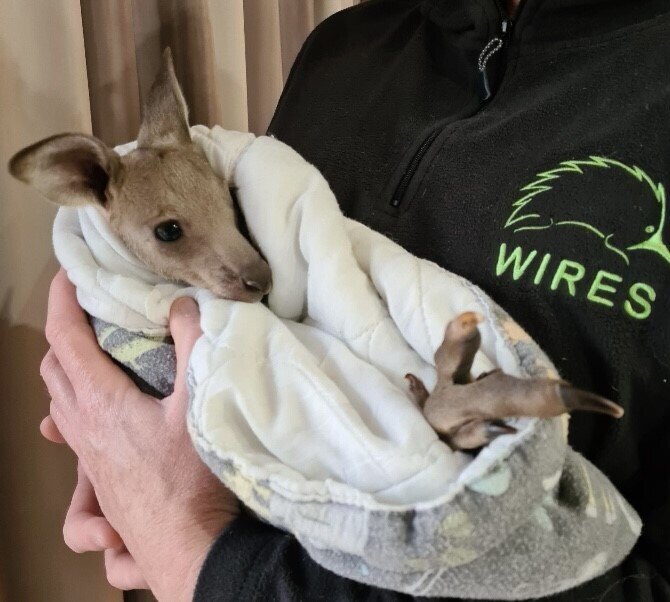Protecting Sydney’s Koalas: Why Corridor Advocacy Is Now Critical
December 2025
For emergency rescue support 24/7 please call 1300 094 737

The Early Days
The year is 1988, and the place is a home in NSW’s Blue Mountains. Heat lies over the land like a shroud and all through the sweltering summer, a landline inside one of the rooms shrills several times an hour.
On the other end of the calls?
People from all over the mountains desperate to get help to injured, sick or dying animals – wallabies, koalas, echidna, lizards, birds and wombats. Some have been involved in traffic accidents; some are fleeing fire, and some are trapped or disoriented in new housing developments. All are at the mercy of forces outside their control.
“Back then we were just a group of volunteers on a roster, each spending 24 hours at a time to answer the phones and try to find rescuers,” remembers WIRES Carer Vickii Lett.
“Taking the calls was one thing, but finding people to attend the rescues and provide the care was another altogether.”
Fast forward thirty-five years and the phones are still ringing.

WIRES might have expanded exponentially in the wake of the Black Summer bushfires that ravaged the country and shot Australia’s wildlife crisis into the spotlight, but the challenges remain.
“Today we answer up to a thousand calls a day,” Vickii says. “The outpouring of donations from the public after the fires has been a massive boost, but we still have a long way to go.”
That’s because the size and scope of Australia’s wildlife crisis is almost unprecedented.
We’ve lost more mammals than any other continent, with more than 100 Australian species already driven to extinction. Every day, some of the world’s most unique species are fighting for their lives – many are losing. The threats come on multiple fronts – extreme weather events including fire and flood, relentless land clearing, traffic and human impacts on native habitat.
“We had a koala in our care here who came to us after being clipped by a car,” Vickii says.
“She was underweight and had a joey in her pouch, and it took us weeks to help her recover with the help of a local wildlife specialist vet.”
Housed in one of a number of specialist enclosures Vickii has built on the property she shares with her husband just north of Grafton, Christy-Ann the koala made a full recovery and was released back into her local koala population.
She returned to the council grounds only a few weeks later, disoriented and unwell. Testing revealed chlamydia, which is widespread among koala populations on the East Coast. The disease weakens the immune system, impacts eyesight and fertility and in many cases, leads to death.
“These kinds of diseases break out when the whole koala population is experiencing stress –land clearing that causes crowding and lack of food, water and shelter; drought, fire and flood; being forced into areas where there are threats from traffic and domestic animals,” Vickii says.
“Rescues are far better than doing nothing at all, but we know that many of the animals we manage to help to recovery and then release are going back into the same dangerous terrain they left.”

It's ironic that all the things animals need to thrive are the very same things that provide healthy environments for humans. Clean air, space, adequate water, and reduced threat from extreme weather events – these are the ingredients that allow whole ecosystems to flourish.
“One of the good things about attending a rescue is the chance just to talk to people about the need to protect habitat, the significance of clean air and soil, what kind of plants can be cultivated in backyard gardens to encourage a better environment for the intricate systems that depend upon it for survival,” Vickii says.
“At the end of the day, you have to hope that the love many Australians have for individual members of our iconic wildlife – like the koala – will translate into the knowledge that they have the power to impact more than just individual lives. The community has the power to change the policy directions and outcomes for our wildlife – and for us too.”
In the meantime, Vickii and her husband are caring for three koalas, two wallabies and an Eastern Grey. As extreme weather continues to ramp up over the summer, WIRES will take up to a thousand calls a day from people seeking to ease the suffering of native animals and are raising money this festive season to support critical rescue, rehabilitation and release programs right across Australia. You can donate here.
Stay in touch and get our regular rescue stories, WIRES updates and a free copy of our 15 Ways to Help Wildlife ebook
November 2025
November 2025
September 2025
August 2025
August 2025